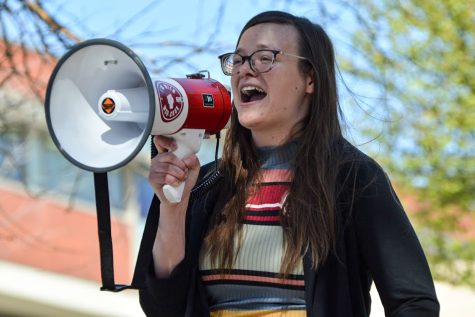Affordable higher education possible
March 5, 2015
Affordable access to higher education and economic strength have always been closely connected. As the global economy becomes increasingly competitive, Washington must provide opportunities for our citizens to acquire skills that give us an advantage. Maintaining an effective higher education system will help accomplish this goal.
While tuition began to outpace inflation in the 1980s, it wasn’t until the 21st century that the steep deviation took hold. As recently as 2002, a person could graduate from the UW or WSU while paying less than $4,000 a year in tuition. A decade later, the price had nearly tripled.
This increased reliance on tuition, rather than increased state funding, has hit families and students hard. In Washington, over half of the students who graduate incur debt, despite Washington having one of the most generous financial aid programs in the country. The average undergraduate debt burden exceeds $20,000 upon graduation. It is clear that reductions in state support inevitably lead to higher tuition, a de facto tax increase on the middle class.
Gov. Jay Inslee’s recent budget exercise requested that higher education institutions prepare budgets that reflected 15 percent cuts. Given past practice that institutions be kept “whole” in terms of per pupil support, this reduction would result in a 12 percent per year tuition hike to backfill institutions.
In his 2013 budget proposal, Inslee included a tuition hike of more than 10 percent, a policy proposal also supported by House Democrats. This would have cost students and families thousands more dollars to receive a higher education diploma. In the end, the Senate Majority Coalition Caucus prevailed on a “tuition freeze” policy for the two years of the budget. This was the first time in nearly 30 years that tuition had been frozen in consecutive years.
The long-term policy that I and the chair of the Senate Higher Education Committee, Sen. Barbara Bailey, have proposed is the College Affordability Program. This legislation would cap current tuition, and its growth, at a percentage of the state average wage. Tuition could be expected to grow by 3 – 4 percent per year based on the history of the state’s average wage growth. The goal is for students working during the summer and holidays to earn enough to pay for tuition like their parents used to be able to. This policy solution also comes with a strong commitment to keep institutions whole with state funding.
The 2015-17 biennial state budget is expected to be over $37 billion. For little more than one-half a percent of the overall budget, we can reverse the trend of the past decade, once again making college affordable and allowing students and their families to graduate debt free.
In light of the required funding increases for K-12 education, is such a policy possible?
Where there’s a will, there’s a way – the Majority Coalition Caucus felt it was imperative to stem the rising tuition tide, and we made it happen in 2013. We can make this happen too.
In the next budget, revenues are forecasted to grow close to $3 billion and if history is any indication, the Legislature will fund many new policy items. Making college affordable again should by high on the priority list.
As my colleagues and I work in the Senate to make college affordable again, students can engage with other elected officials. Let them know how important higher education is and that significant changes can be made by prioritizing investment in higher education with a relatively small portion of the state’s budget.




















